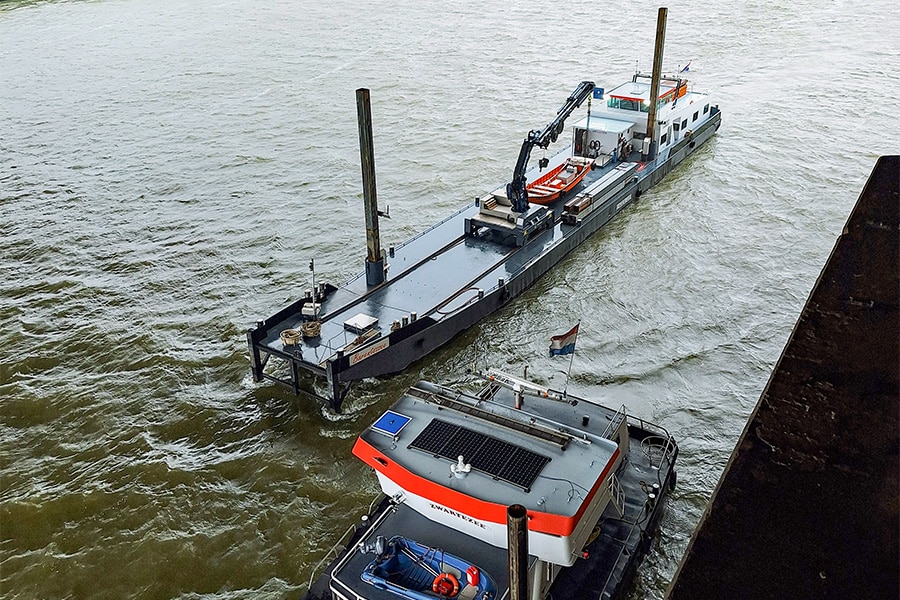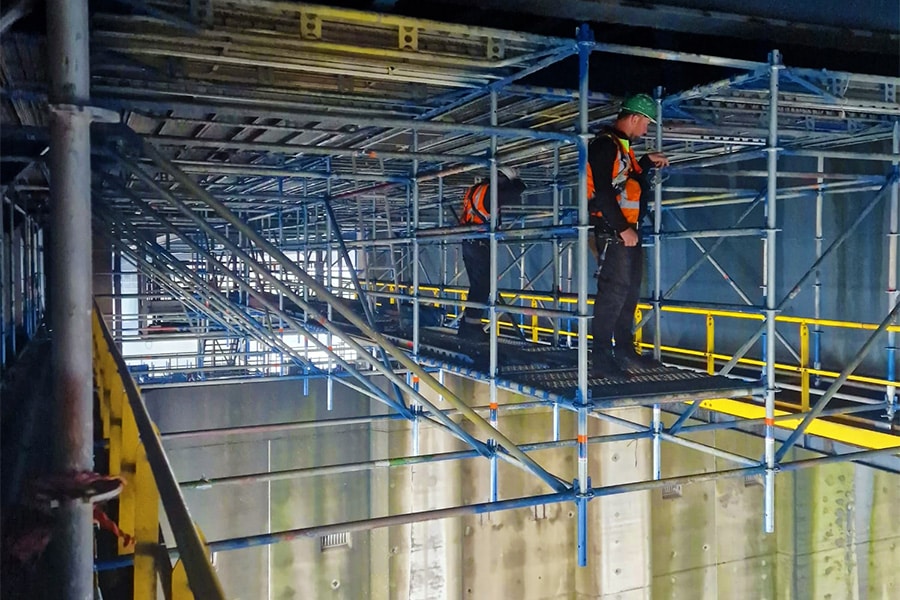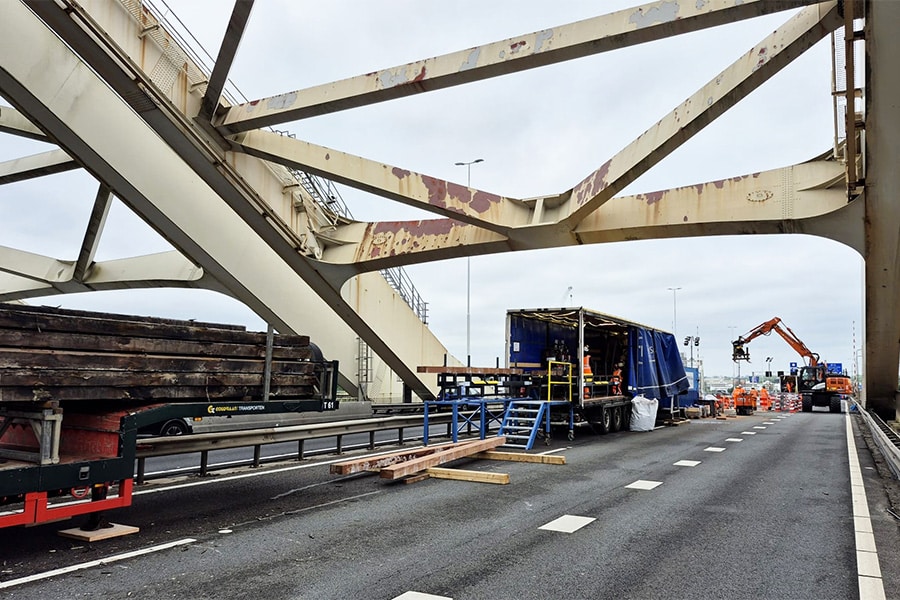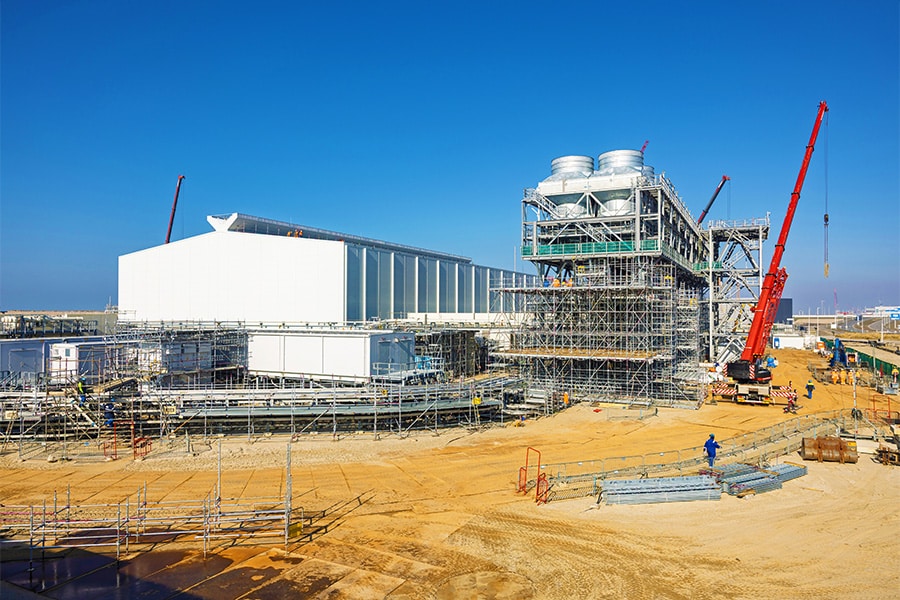
Van Brienenoord Bridge: a fascinating interplay of wood and steel
395 wooden beams and 5,200 bolts replaced
The Van Brienenoord Bridge is more than half a century old. The busiest bridge in the Netherlands "guides" more than 230,000 vehicles across the Nieuwe Maas every day. And most of them drive unsuspectingly over a very special construction. The eastfall is in fact characterized by a fascinating interplay of wood and steel. And that is precisely where the shoe was wearing. The cracked wear layer allowed water to penetrate into the wooden beams of the valve. This ultimately led to an initial repair operation in June 2024, which was aborted prematurely because the situation turned out to be more serious than estimated. After thorough preparation, 395 beams and 5,200 bolts were replaced during the long weekends of Ascension and Pentecost so that the bridge will remain safe and available until the large-scale renewal planned from 2029.
Rijkswaterstaat faces a huge task. Many bridges, tunnels, viaducts and roads were built in the 1950s and 1960s and are now eligible for large-scale renovation or even complete replacement. That can't be done all at once. To save time, Rijkswaterstaat set up the Over-Bruggen team in South Holland, with the goal of carrying out the most urgently needed major maintenance on 20 steel, movable bridges until replacement or renovation. The Van Brienenoord Bridge is one of them and consists of two adjacent arched bridges with three bascule bridges following on from them. The east arch dates from 1965. The west arch is a lot younger and was not constructed until 1990.

Natter than thought
The Over Bridges team takes a critical look at each structure to assess which parts need to be addressed so that the bridge remains safe and available until the replacement and renovation task is complete, says Menno Kamp, environment manager at Rijkswaterstaat. "During that inspection on the Van Brienenoord Bridge, damage was found to a number of wooden beams in the east fall due to cracks in the wearing course. So a repair operation was initiated. Initially, the idea was to replace only the 13 beams that were in poor condition at the time and to replace the bolts of all beams due to extensive wear and tear. During the repair operation in June 2024, the loosening of those beams turned out to cause damage to adjacent beams as well. The jacking out of the bolts also resulted in damage to adjacent beams. The reason was that the beams were much wetter than previously estimated.
Because the wear layer on the beams had become porous, water had penetrated deep into the wood. Because of the damage to the adjacent beams and the disappointing condition of the beams, it was decided to abort the implementation and restore the wear layer with "spot repair" as best as possible to bring the situation to a halt. A plan was then forged for a final repair. A smart and creative plan was needed in this regard in order to carry out the work as efficiently and with as little disruption and risk of overrun as possible."
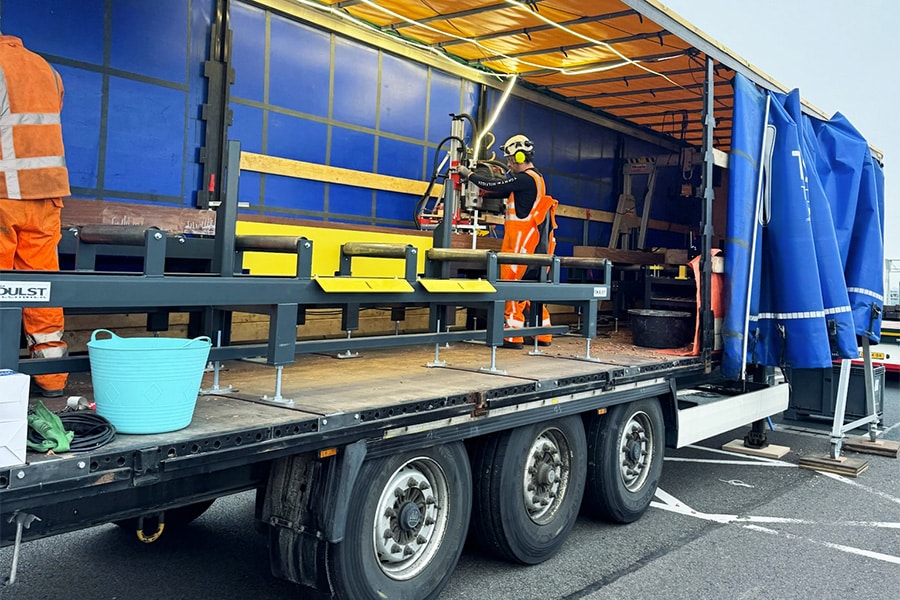
Chrome VI
It was decided to carry out the repair operation during the long and consecutive weekends of Ascension and Pentecost in 2025. "The scope involved replacing 395 Azobé beams weighing 200 kg each, replacing 5,200 bolts and replacing the asphalt under the arch bridge and on the basement roof," says Erwin Kommeren, technical manager at Rijkswaterstaat. "In preparation, a suspended scaffold was first built under the movable part of the trap in order to remove the bolts. The preparation also included all the learning points from the June 2024 repair action. The bolts turned out to be enormously rusted. This made loosening them with a sniping tool time-consuming and not particularly efficient. So the idea of grinding them through was suggested. However, the coating contained chromium VI. It was therefore decided to remove all the preservation and corrosion prior to the first weekend, under conditioned conditions."
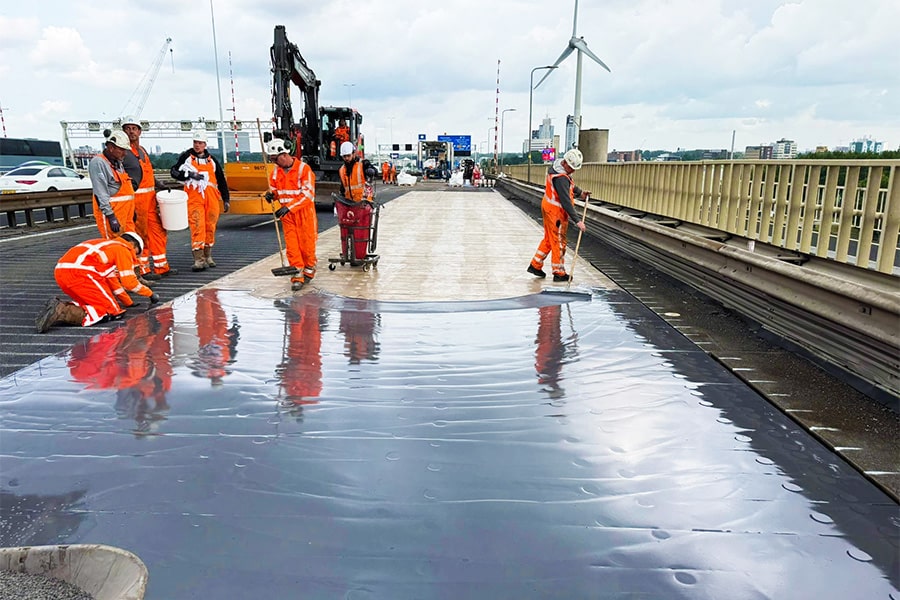
Drill Streets
After blasting, the bolts could be ground through without additional H&S measures during the two scheduled weekends, shortly before the removal of the old beams. "However, grinding above shoulder height is physically demanding work and increases the risk of accidents and damage to the existing structure," says Kommeren. "Special suspension brackets were therefore developed that could be mounted between the longitudinal beams to which the wood is attached, so that the grinder only had to be turned into the bolt. With that action, the critical path was no longer on loosening the bolts, but on putting the beams back in place. Even in this, more pace had to be made, because the time span of two (long) weekends was too tight for the installation of 395 new beams in a traditional way. This is because on the Van Brienenoord Bridge, each bolt hole is uniquely positioned on the beam. So the new beam must first be laid in position to mark off the bolt holes. It is then taken out again to drill the 12 holes, after which the beam can be placed back in position and anchored. Again, this is physically demanding work resulting in jamming machines and hard wearing drills. This operation was optimized by setting up two trailers with a drilling line, complete with a gantry crane, roller conveyors and drilling machines in a tripod. With the drilling lines, we not only managed to significantly increase the handling speed, but also made the work much more labor-friendly. We have had many positive reactions to this from the people who performed the work."
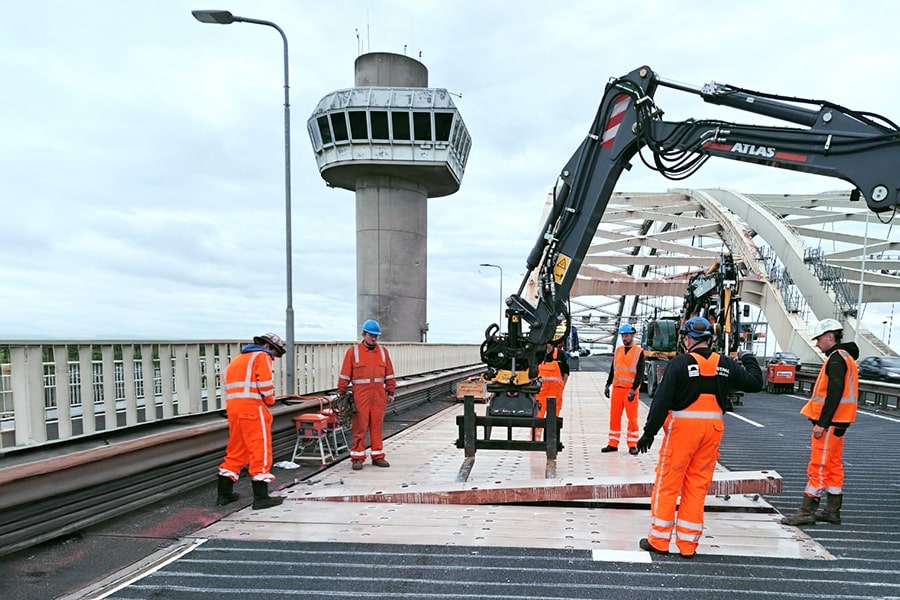
Wear layer
To protect the wooden beams from moisture intrusion and give them sufficient skid resistance, they are coated with a wear layer after application. "The wear layer has to be built up in two layers and the process of application is very sensitive to weather conditions. Moreover, the first layer has to dry for about 4 to 5 hours before the second layer can be applied. So not exactly conducive to the turnaround time, which was already limited," says Kommeren. "That process was also optimized by providing the beams with the first part of the wear layer already in the sawmill. This saved us a full drying cycle, which saved a lot of time on the bridge. After mounting the bolts, the bolt holes were poured with an epoxy after which the second and final part of the wear layer was applied and dusted with gravel. Next, saw cuts a few millimeters deep were made in the wear layer to guide potential cracks right at the seam of the beams. And finally, a new layer of asphalt was applied."
"What stood out during the repair operation was that the steel is still in relatively good condition. No additional major maintenance is needed until the preservation task," Kommeren said. Until the replacement and renovation task, the bridge will be continuously maintained so that it remains safe and available. The Over Bridges team is already working on the next structure. "Over the next ten years, we will tackle two structures in this way every year," says Kamp. "Currently, our focus is already on the Algera Bridge and Merwede Bridge. We are also going to replace the wooden beams on the Algera Bridge, but here the underlying steel will also have to be addressed. That makes the lead time significantly longer than the two weekends we needed on the Van Brienenoord Bridge."
